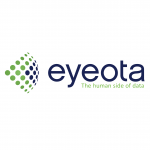Programmatic ad buying is the latest buzz in digital advertising, but not enough marketers have started implementing it yet.
Programmatic technology crunches staggeringly huge amounts of valuable audience data differentiated by each demographic and segment.
This is key to helping advertisers understand their customers in a new way – as human beings.
How To Use Audience Data
In a programmatic environment, the more data you have, the better. But the quality of data matters too. Advertisers can only achieve maximum ROI from their ad spend when partnering with a data vendor that provides high quality data.
Even brands and publishers with their own first party data need to supplement their campaigns with third party data. Third party data allows marketers to target prospects at scale and find look-a-like prospects. You minimise ad spend wastage because you get to reach real people and not robots. Data fuels programmatic buying because it allows the buying platform to learn and optimise for future bids.
How To Choose Your Data Provider
Here are some questions you should ask your data provider before partnering with them:
Where do you collect your data?
Not all data is created equal. The quality and breadth of data used in performance campaigns is a critical success factor. You need to ascertain from your data provider where the data has been derived from. Is it collected from a publisher’s website? Is it declared registration data? Is this data modelled from market research surveys, which can be unreliable? This is important because it will enable you to determine its relevancy to your campaign and flag any limitations.
How fresh is your data?
Some forms of data, such as Purchase Intent, have a very short shelf life. In today’s digital era any data older than 30 days is unlikely to deliver the desired outcome.
How can I use your data?
It is important that in the early planning stages of the campaign, you think about how the data you buy will be used, and communicate that to your data provider. For example, do you want to use it for search, display, social, or mobile? Are you trying to target a particular demographic? What do you want to track? The more detail you can provide upfront, the more your data provider can work with you to ensure that the data they deliver is as precise as possible.
What Data Segments Marketers Need
Depending on the sector, marketers need to find the data segments most relevant to them. Some of these segments include:
- Demographics: Data segments that relate to the characteristics of a user such as gender or age.
- Intent: Data segments that relate to the purchase of goods or services by visiting comparison sites, product review sites, booking engines or ecommerce sites.
- Interest: Data segments that allow you to target based on a user’s specific interest and hobbies.
- B2B: Data segments that allow you to target based on business criteria such as industry, size of company, profession.
- Seasonal segments: A range of seasonal segments to help target your campaigns around holidays, special occasions and sporting events.
- Branded data: Use the traditional marketing segmentation that you use for media planning for TV, radio, print and the web.


